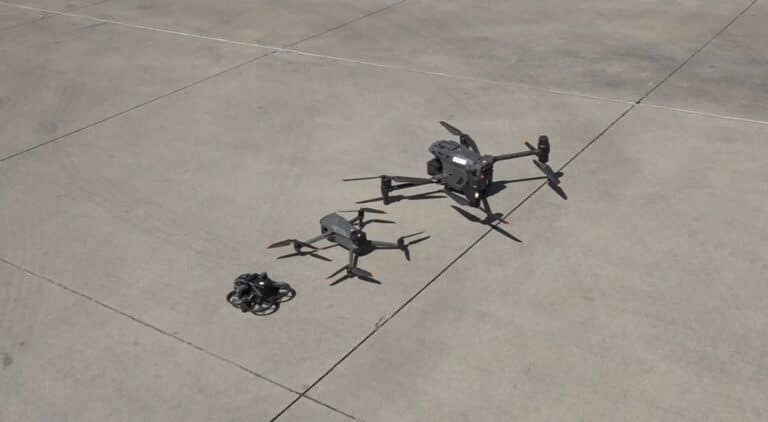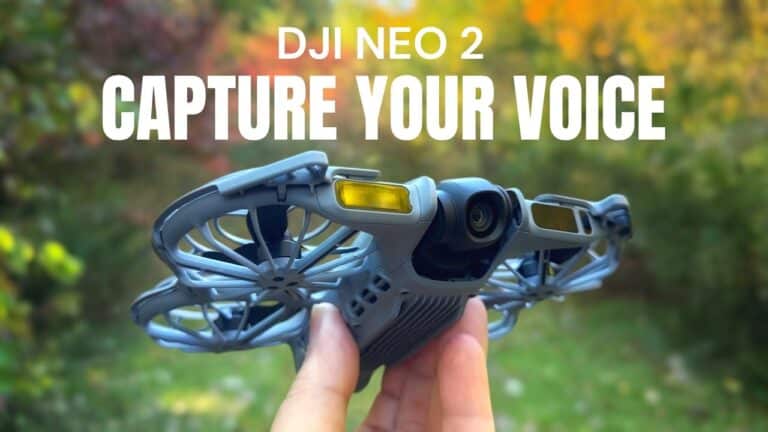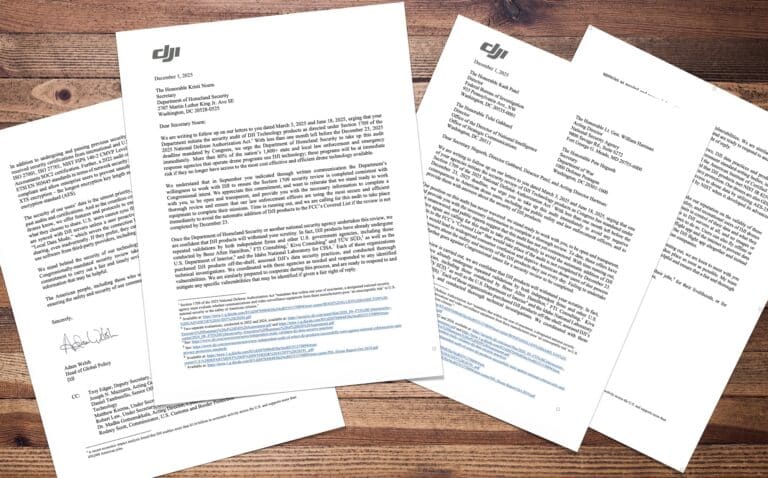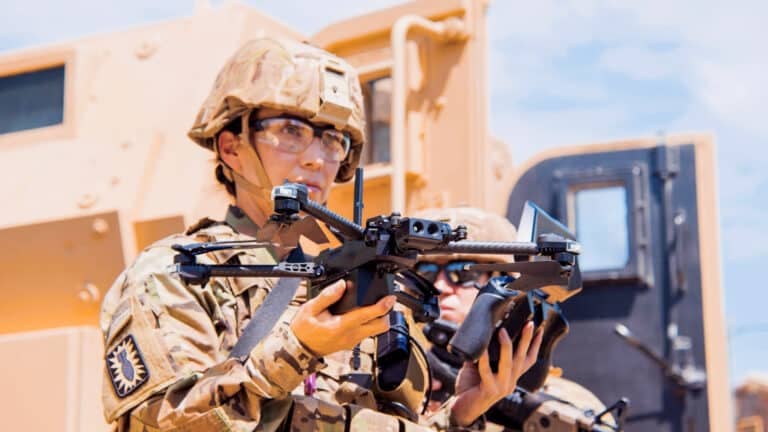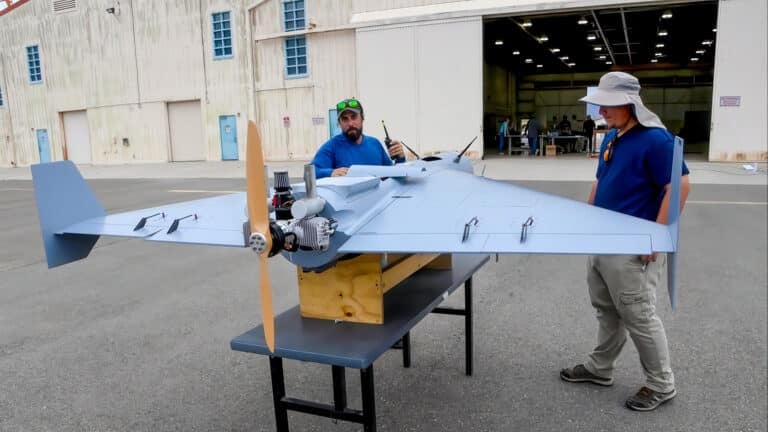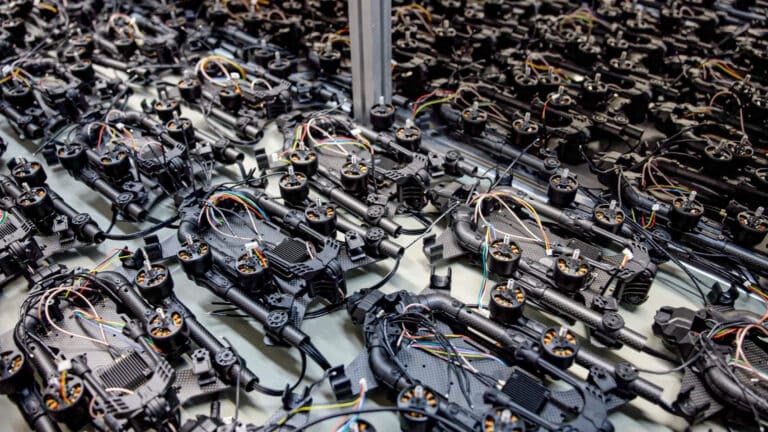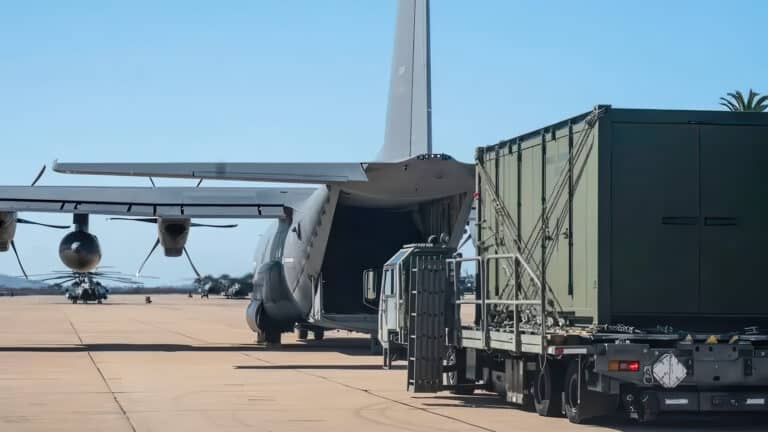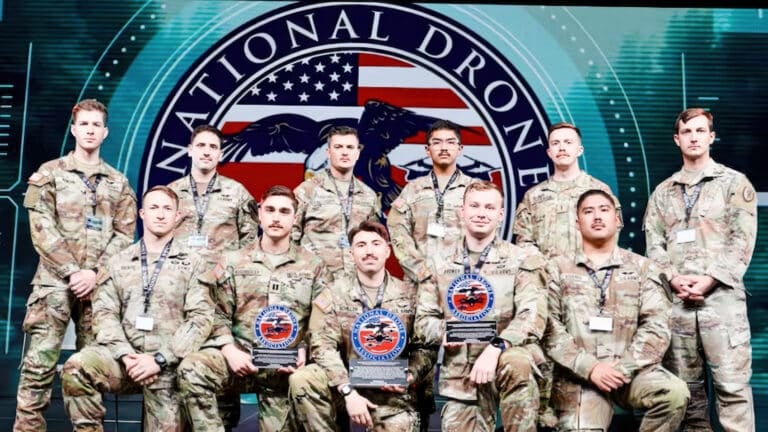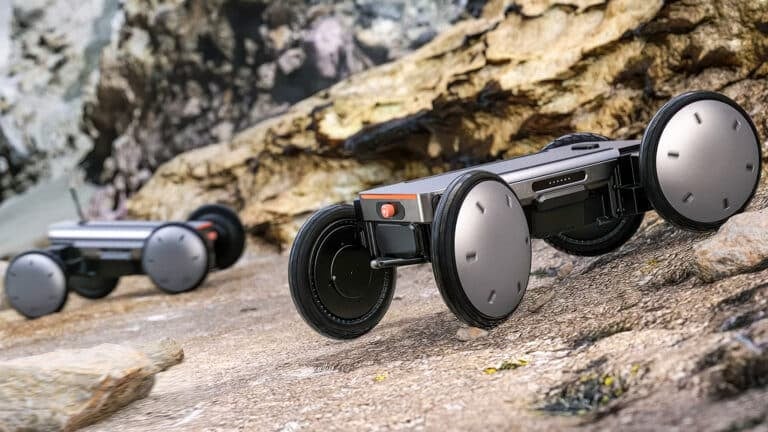UAS Nexus Launches Drone Syndicate To Solve Blue UAS Component Supply Chaos

Amazon Drone Deals: DJI Mini 5 Pro Fly More Combo with DJI RC2 now for $1,099!
Utah engineering firm unveils NDAA-compliant parts marketplace and MOSA-first FPV platform as Pentagon drone orders surge.
While defense contractors battle for Blue UAS contracts, a Salt Lake City engineering firm is solving a more fundamental problem: sourcing the thousands of NDAA-compliant components needed to actually build drones at wartime scale.
UAS Nexus launched the Drone Syndicate Store on November 20, 2025, offering vetted marketplace access to NDAA and Blue UAS compliant components alongside Platform One, a Modular Open Systems Approach (MOSA) FPV platform capable of 10,000-plus aircraft monthly production through decentralized manufacturing.
The Component Sourcing Bottleneck
“It can be tough to scour the globe for drone parts when you’re looking to build an NDAA or BlueUAS compliant platform,” CEO Bobby Sakaki said in the company announcement.
“So we developed a resource for OEMs and end-users to procure hardware quickly and reliably that layers into our technical engineering services.”
The marketplace operates through a membership request system, reflecting the specialized compliance requirements and limited availability that plague NDAA-compliant component sourcing.
The timing addresses urgent military demand. The U.S. Army plans to purchase at least one million drones over the next two to three years, while the Marine Corps recently ordered 8,000 FPV drones under a $17 million contract with manufacturers like Neros Technologies.
Platform One: Ukraine-Inspired Manufacturing
Platform One takes direct inspiration from Ukraine’s battlefield-proven approach to FPV production. The MOSA-first design works with most Commercial Off-The-Shelf (COTs) components, creating supply chain resilience through vendor flexibility.
“It’s simple, and it works with just about everything on the market, so you have a truly resilient supply chain because if one vendor is maxed out, you can leverage dozens of others,” said Ryan LaBarre, UAS Nexus Head of Mechanical who designed Platform One.
“Plus when you manufacture on the edge, you can customize it however you want.”
The decentralized manufacturing model mirrors Ukraine’s successful strategy of producing drones through distributed networks rather than centralized facilities. Ukrainian manufacturers are projected to produce 2 million FPV drones in 2025 alone, with individual units costing roughly the same as an Android smartphone.
MOSA Architecture Mandated By DoD
The Department of Defense now requires Modular Open Systems Approach in all major defense acquisition programs under Title 10 U.S.C. 4401(b). MOSA mandates designs using interchangeable components with standardized interfaces, eliminating vendor lock and accelerating technology upgrades.
The approach allows system components to be added, removed, or replaced throughout a platform’s lifecycle. For FPV drones operating in contested electromagnetic environments, this modularity enables rapid adaptation to electronic warfare threats without redesigning entire systems.
Platform One’s MOSA compatibility positions it to serve multiple manufacturers building to Pentagon specifications, creating an infrastructure layer rather than competing as a finished drone vendor.
Salt Lake City’s Drone Ecosystem
UAS Nexus joins a growing Utah aerospace cluster including Teal Drones, a Red Cat Holdings subsidiary that builds Blue UAS-listed platforms. The state hosts federally designated drone testing corridors and benefits from proximity to Hill Air Force Base, home to the first MQ-9 Reaper Attack Wing.
Sakaki brings extensive industry connections developed through previous roles at Ascent AeroSystems, Autel Robotics, and WhiteFox Defense Technologies. His consulting firm has worked with multiple Blue UAS vendors, providing integration expertise for platforms from companies including Teal, Ascent AeroSystems, and Inspired Flight.
The company’s network extends to component manufacturers, with Sakaki publicly endorsing radio links from Doodle Labs and TBS Crossfire for different applications. These relationships position Drone Syndicate to curate vetted suppliers across the technology stack.
Market Gap In Component Infrastructure
Traditional Blue UAS vendors like Skydio, Teal, and Anduril focus on complete aircraft platforms. UAS Nexus is building the underlying component marketplace and manufacturing standard that multiple vendors can leverage.
The need became acute after the Blue UAS list underwent dramatic volatility in March 2025, when eight vendors were removed including Parrot, Inspired Flight, Ascent AeroSystems Spirit, and Vantage. The removals created sourcing chaos for agencies that had standardized on those platforms.
Component-level listings in the Blue UAS Framework have seen growing demand. Unusual Machines secured a $1.6 million order in August 2025 for Fat Shark Aura FPV cameras and HDO+ goggles, with the Aura cameras specifically listed in the Blue UAS Framework for NDAA compliance.
Broader Market Context
The launch comes as executive orders signed in June 2025 directed federal agencies to prioritize U.S.-manufactured drones over foreign alternatives. The orders shifted focus from data security concerns to supply chain vulnerabilities, with the Federal Acquisition Security Council tasked with publishing a “covered foreign entity list” by July 2025.
That list would prevent federal agencies from purchasing drones from listed companies, creating immediate demand for vetted domestic supply chains.
The Department of Defense’s Blue UAS program continues evolving. The DIU’s Blue UAS Challenge in February 2025 evaluated 369 proposals from companies across 19 countries, selecting 23 platforms and 14 components for NDAA verification and cybersecurity review.
DroneXL’s Take
This launch crystallizes a market shift we’ve been tracking for months. When eight vendors got axed from the Blue UAS list in March, it exposed the fragility of relying on complete platform vendors for government drone programs. Agencies that had standardized on Parrot ANAFI USA or Inspired Flight systems suddenly faced procurement dead ends.
UAS Nexus is betting that the real bottleneck isn’t drone platforms – it’s the unglamorous infrastructure layer of NDAA-compliant components that actually let you build those platforms at scale. That’s a smart read of where Pentagon procurement is heading.
The timing aligns perfectly with surging FPV demand. As we covered with Neros Technologies’ $121 million in funding, the Army wants a million drones in 2-3 years. The Marine Corps just ordered 8,000 FPVs. Those numbers require supply chain infrastructure that simply doesn’t exist yet in the domestic market.
Platform One’s MOSA architecture directly addresses DoD mandates while copying Ukraine’s playbook. Ukrainian manufacturers are cranking out 2 million FPV drones annually through decentralized production networks. They’re not building in massive factories – they’re manufacturing on the edge, exactly what Platform One enables through COTs component compatibility.
The August 2025 Unusual Machines order for $1.6 million in NDAA-compliant FPV components showed component-level Blue UAS listings creating real revenue opportunities. Drone Syndicate could become the one-stop shop for those components, assuming they deliver on the vetting promises.
There’s a critical question mark around that 10,000 aircraft monthly production claim. That’s aggressive for a company without major public funding announcements. Ukraine achieves massive FPV production through hundreds of workshops, not single facilities. Platform One might enable that distributed model domestically, but scaling to 10,000 units monthly requires serious manufacturing partnerships we haven’t seen announced yet.
The membership-based access model makes strategic sense for a market plagued by counterfeit components and compliance uncertainties. It also creates a moat – once manufacturers integrate Syndicate-sourced components into their supply chains, switching costs discourage shopping around.
Salt Lake City’s drone ecosystem gives UAS Nexus geographic advantages. Proximity to Teal Drones, Hill Air Force Base, and Utah’s drone testing corridors creates natural partnership opportunities. Sakaki’s decade of industry relationships – Ascent AeroSystems, Autel, WhiteFox – position him to curate suppliers that actually meet military requirements rather than just claiming NDAA compliance.
Executive orders from June 2025 directed federal agencies to prioritize domestic drones, shifting the conversation from data security to supply chain resilience. That policy change turbocharged demand for exactly what Drone Syndicate offers: vetted domestic components with verified compliance.
The real test will be execution. Can they maintain component inventory when vendors max out capacity? Will the MOSA architecture actually deliver vendor flexibility in practice, or will manufacturers still face integration headaches? And crucially – can Platform One achieve cost parity with Ukraine’s sub-smartphone-price FPV production while maintaining NDAA compliance?
If UAS Nexus pulls this off, they’ll have built critical infrastructure for domestic drone production at scale. If they stumble on supply chain execution or MOSA integration complexity, they’ll join the long list of defense tech companies with great PowerPoints but struggling operations.
The Pentagon’s million-drone ambition depends on solving exactly these component sourcing and scalable manufacturing problems. Drone Syndicate and Platform One represent a serious attempt at infrastructure rather than just another platform vendor.
What do you think? Share your thoughts in the comments below.
Discover more from DroneXL.co
Subscribe to get the latest posts sent to your email.
Check out our Classic Line of T-Shirts, Polos, Hoodies and more in our new store today!

MAKE YOUR VOICE HEARD
Proposed legislation threatens your ability to use drones for fun, work, and safety. The Drone Advocacy Alliance is fighting to ensure your voice is heard in these critical policy discussions.Join us and tell your elected officials to protect your right to fly.
Get your Part 107 Certificate
Pass the Part 107 test and take to the skies with the Pilot Institute. We have helped thousands of people become airplane and commercial drone pilots. Our courses are designed by industry experts to help you pass FAA tests and achieve your dreams.

Copyright © DroneXL.co 2025. All rights reserved. The content, images, and intellectual property on this website are protected by copyright law. Reproduction or distribution of any material without prior written permission from DroneXL.co is strictly prohibited. For permissions and inquiries, please contact us first. DroneXL.co is a proud partner of the Drone Advocacy Alliance. Be sure to check out DroneXL's sister site, EVXL.co, for all the latest news on electric vehicles.
FTC: DroneXL.co is an Amazon Associate and uses affiliate links that can generate income from qualifying purchases. We do not sell, share, rent out, or spam your email.




